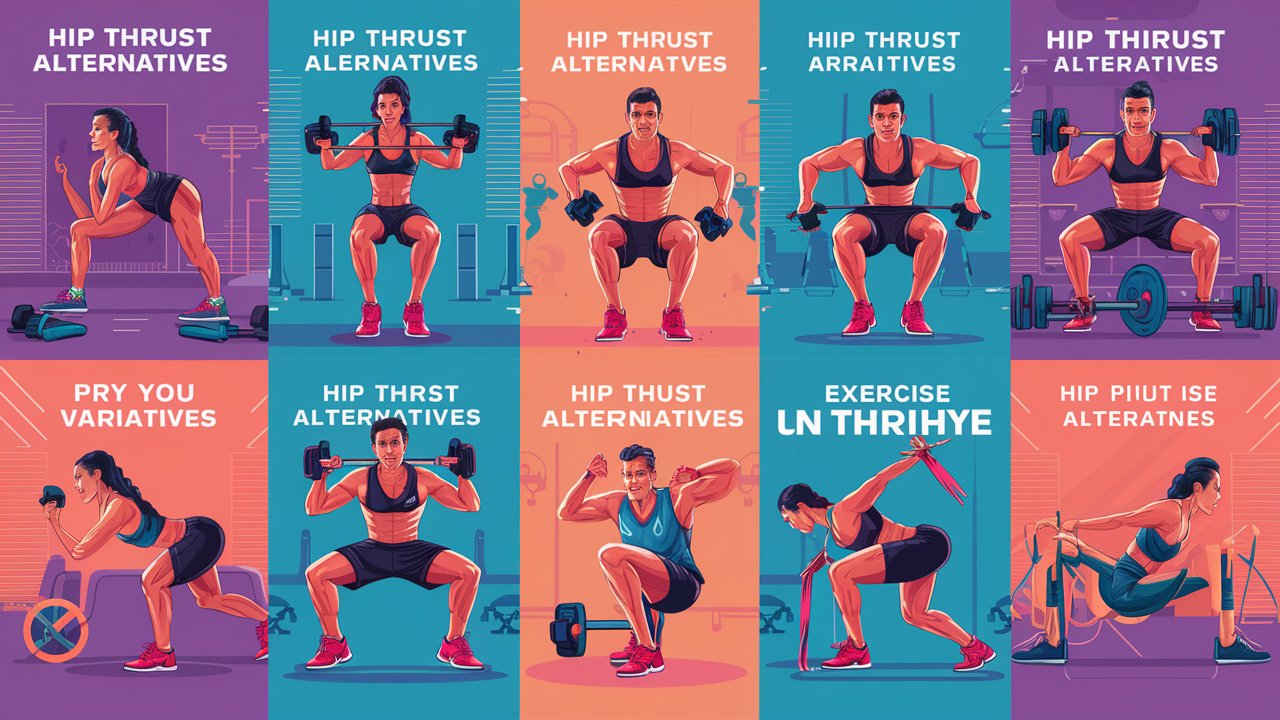Top 10 Healthy Alternatives to Non-Stick Pans.
- Stainless Steel:
- Pros: Durable, versatile, and can be made non-stick with proper seasoning and technique.
- Cons: May require more effort to prevent sticking, especially for delicate foods.
- Cast Iron:
- Pros: Excellent heat retention and distribution, naturally non-stick when properly seasoned, and extremely durable.
- Cons: Heavy, requires seasoning and maintenance, and may react with acidic foods.
- Ceramic-Coated Cookware:
- Pros: PFOA and PTFE-free, easy to clean, and relatively non-stick.
- Cons: Can be fragile, may not be as durable as other options, and can be more expensive.
- Enameled Cast Iron:
- Pros: Durable, non-reactive, and easy to clean. Provides excellent heat retention and distribution.
- Cons: Heavy, can be expensive, and may require more care than other options.
- Carbon Steel:
- Pros: Lightweight, durable, and can develop a natural non-stick surface with proper seasoning.
- Cons: Requires more maintenance than some other options, and may be more challenging to find.
- Copper:
- Pros: Excellent heat conductivity, can be non-stick with proper care, and visually appealing.
- Cons: Can be expensive, requires more maintenance, and may react with acidic foods.
- Glass:
- Pros: Non-reactive, easy to clean, and durable.
- Cons: May not be as non-stick as other options, and can be more fragile.
- Silicone:
- Pros: Non-stick, easy to clean, and heat-resistant.
- Cons: May not be as durable as other options, and can be more expensive.
- Titanium:
- Pros: Durable, non-reactive, and can be non-stick with proper care.
- Cons: Can be more expensive than other options.
- Ceramic Bakeware:
- Pros: PFOA and PTFE-free, easy to clean, and can be non-stick.
- Cons: May be more fragile than other options, and can be more expensive.
In a kitchen world enamored with the convenience of non-stick pans, have you ever pondered the potential trade-offs lurking beneath that slick surface? Embark on a culinary journey where liberation from conventional cooking utensils becomes not just a choice but an awakening to healthier and more sustainable alternatives.
Picture this – a potpourri of stainless steel, cast iron, and ceramic options inviting you to bid adieu to chemical-laden coatings and embrace a newfound sense of freedom in your cookware selection.
As we navigate these uncharted territories of kitchenware choices, let’s peel back the layers of tradition and delve into the vibrant realm of innovative options that beckon us with promises of safer culinary explorations.
While there may be comfort in the familiar sizzle of non-stick pans, the time has ripened for a paradigm shift towards environmentally conscious and health-inspired kitchen practices. By challenging age-old norms entrenched in our culinary routines, we set forth on a quest not just for sustenance, but for empowerment through informed decision-making.
Imagine the possibilities that unfold when every stir-fry or sauté is infused with a dash of sustainability and wellbeing. With each clink of an alternative pan against the stove, we carve out pathways towards greener pastures where flavor isn’t compromised, but elevated by conscientious choices.
Are you ready to break free from the shackles of conventionality and savor the simmering essence of change with each savory dish prepared in your newfound sanctuary of healthy alternatives?
Understanding Non-Stick Pans.
Let’s delve into the world of non-stick pans and uncover more about the materials they are made of and their potential impact on health. Many non-stick pans are coated with polytetrafluoroethylene (PTFE), commonly known as Teflon, which can release harmful chemicals when heated to high temperatures.
These chemicals have been linked to health risks, including potential carcinogenic effects. By understanding the composition of non-stick pans, we empower ourselves to make informed decisions about our cookware choices and prioritize our well-being.
Beyond the health considerations, it’s also essential to examine the environmental impact of non-stick pans. Traditional non-stick coatings contain perfluorooctanoic acid (PFOA), a persistent chemical that can accumulate in the environment and pose risks to wildlife and ecosystems.
Disposing of old non-stick pans can further contribute to pollution if they end up in landfills. By exploring these aspects, we start on a path towards more sustainable kitchen practices and encourage a shift towards eco-friendly alternatives that promote both personal and environmental health.
By questioning the status quo and seeking out alternatives to traditional non-stick pans, we open doors to healthier cooking experiences while reducing our ecological footprint. This journey isn’t just about swapping one pan for another; it’s a meaningful step towards creating a safer kitchen environment for ourselves and future generations, one mindful choice at a time.
Traditional Cookware Options: Embracing Time-Tested Alternatives.
When it comes to ditching non-stick pans for healthier alternatives, traditional cookware options like stainless steel, cast iron, and ceramic stand out as reliable choices. Stainless steel cookware is renowned for its durability and versatility, making it a favorite among home cooks looking for a long-lasting option.
Cast iron pans, with their excellent heat retention and natural non-stick properties when properly seasoned, offer a timeless appeal for those seeking a more rustic cooking experience. Ceramic cookware, known for being free of harmful chemicals like PFOA and PTFE found in some non-stick coatings, provides a safe and eco-friendly alternative that can elevate your culinary creations.
Comparing the durability and cooking performance of traditional cookware with non-stick options reveals interesting insights. While non-stick pans may offer convenience in terms of easy cleanup and fewer chances of food sticking, they often come with concerns about chemical leaching at high temperatures.
On the other hand, traditional cookware options may require some seasoning or maintenance but excel in longevity and the ability to achieve high heat for proper searing and browning. By understanding these distinctions, you can make informed decisions based on your cooking preferences and health priorities.
Delving into the world of traditional cookware opens up a realm of possibilities where quality craftsmanship meets time-honored practices. Imagine searing a perfectly crusted steak in a well-seasoned cast iron pan or effortlessly deglazing onions in a stainless steel skillet—the beauty of these traditional materials lies not only in their functionality but also in the stories they carry through generations of culinary traditions.
As you explore these classic alternatives to non-stick pans, you empower yourself to rediscover the joys of cooking while taking significant steps towards healthier kitchen practices.
By embracing traditional cookware options as viable alternatives to non-stick pans, you not only invest in durable kitchen companions but also contribute to reducing your environmental footprint by choosing long-lasting materials over disposable solutions.
The next time you reach for a frying pan or saucepot, consider the rich history and proven performance that traditional cookware offers—a journey that leads to flavorful meals crafted with care and consciousness towards your health and the planet.
Innovative Alternatives in Kitchenware: Embracing the Future of Healthy Cooking.
As we journey towards a healthier kitchen, exploring innovative alternatives to traditional non-stick pans opens doors to a world of exciting possibilities. Imagine cooking with titanium-coated cookware that combines strength and non-toxicity for a supreme cooking experience.
Titanium is renowned for its durability and resistance to scratches, ensuring your cookware stands the test of time while prioritizing health. This innovative option not only provides a safe cooking surface but also adds a touch of modernity to your culinary adventures.
Glass cookware emerges as another captivating alternative, offering transparency and purity in every dish you prepare. Delight in the crystal-clear visuals as your meals come to life in glass pots and pans. Beyond aesthetics, glass cookware eliminates concerns about harmful chemicals leaching into your food, promoting a fresh and uncontaminated approach to cooking.
Its versatility in the kitchen allows for seamless transitions from stovetop to oven, simplifying your cooking process while maintaining an eco-conscious stance.
What sets these groundbreaking alternatives apart from traditional non-stick pans goes beyond their impressive features—it’s the reassurance they bring to health-focused home cooks. By incorporating these advanced materials into our kitchen arsenal, we not only elevate our cooking experiences but also prioritize our well-being without compromising on performance or convenience.
The future of healthy cooking lies in embracing innovation, inviting us to reassess our utensils with a forward-thinking perspective that aligns with both sustainability and wellness goals.
Budget-Friendly Alternatives.
For budget-conscious consumers looking to steer clear of non-stick pans without breaking the bank, several cost-effective alternatives offer quality and durability. One such option is carbon steel cookware, which is often priced lower than high-end stainless steel but boasts similar performance benefits.
Carbon steel pans are versatile, lightweight, and excellent for searing and browning—making them a practical choice for everyday cooking needs. Consider exploring local kitchen supply stores or online platforms that offer discounts on these sturdy and reliable alternatives.
Another budget-friendly alternative gaining popularity is seasoned cast iron cookware. Cast iron pans and skillets provide excellent heat retention and even cooking while being relatively inexpensive compared to other premium cookware options.
These timeless pieces only improve with age as they develop a natural non-stick coating when properly seasoned, offering a healthy alternative for home cooks on a budget. Look out for second-hand cast iron pans at thrift stores or estate sales for an eco-friendly and cost-effective way to upgrade your kitchenware collection.
In the realm of affordable alternatives, don’t overlook enamel-coated cast iron cookware. Combining the benefits of traditional cast iron with a convenient non-reactive enamel finish, these pots and pans are easy to clean, oven-safe, and retain heat exceptionally well.
They come in a variety of vibrant colors that can add a touch of style to your kitchen without burning a hole in your pocket. Check out seasonal sales at reputable kitchenware retailers or browse online marketplaces known for offering discounted prices on enamel-coated cast iron sets to enhance your cooking experience affordably.
Embracing Sustainable Kitchen Practices.
Transitioning away from non-stick pans not only impacts our health but also aligns with sustainable living practices vital for our planet’s well-being. By choosing eco-friendly kitchenware alternatives, we contribute to reducing waste and minimizing our environmental footprint.
Consider the volume of non-stick pans disposed of each year; their chemical coatings can harm soil and pose a threat to wildlife if not recycled properly. Opting for sustainable materials like stainless steel, cast iron, or ceramic in cookware can significantly reduce this environmental impact.
Imagine your kitchen as a hub of sustainability where every choice you make contributes positively to the environment. Eco-friendly kitchenware options are designed with durability in mind, ensuring that your investment lasts longer and minimizes the need for frequent replacements.
This shift towards sustainable choices is about more than just cooking; it’s a conscious decision to be mindful of our consumption habits and their broader effects on the world around us.
By exploring alternative kitchenware options that prioritize sustainability, we empower ourselves to make a difference in how we interact with our environment daily. Whether it’s investing in reusable silicone food storage bags or opting for bamboo cooking utensils, each small change adds up to significant progress towards a more sustainable lifestyle.
Let’s embark on this journey together, one environmentally conscious kitchen choice at a time, knowing that each decision leads us closer to a greener future for generations to come.
User Success Stories.
Imagine Sarah, a home cook with a passion for healthy living, who decided to make the switch from non-stick pans to stainless steel alternatives. Concerned about potential health risks associated with traditional non-stick coatings, she embraced stainless steel cookware for its durability and safety.
Transitioning her kitchen to eco-friendly options further fueled her enthusiasm. Sarah noticed a remarkable improvement in the richness of flavors in her dishes as stainless steel retained heat better than non-stick pans. Not only did she enhance her cooking experience, but she also took a significant step towards a healthier lifestyle by choosing alternatives aligned with her values.
John, an environmental enthusiast, found solace in ceramic cookware after bidding farewell to his old non-stick collection. The unique composition of ceramic pots and pans appealed to his sustainability mindset.
He discovered that these alternatives not only reduced his exposure to potentially harmful chemicals but also made cleaning up a breeze—less time scrubbing meant more time enjoying delicious meals guilt-free. By sharing his journey with family and friends, John inspired them to rethink their kitchenware choices and explore the realm of healthier alternatives.
These user success stories exemplify how transitioning from non-stick pans to healthier alternatives can transform one’s culinary experience and well-being. By listening to their preferences, concerns, and values, Sarah and John navigated through diverse options until they found the perfect fit for their kitchens.
Their stories remind us that breaking free from conventional non-stick pans is not just about swapping one tool for another; it’s about embracing a lifestyle that prioritizes health, sustainability, and joy in every meal cooked. Join this community of empowered individuals who have taken steps towards healthier cooking practices through alternative kitchenware choices – your culinary journey awaits!
Taking the Next Step Towards Healthier Cooking.
As we wrap up our journey in exploring alternatives to non-stick pans, it’s clear that there are numerous options available that not only promote healthier cooking but also contribute positively to our environment.
By summarizing the risks associated with traditional non-stick pans and highlighting alternatives such as stainless steel, cast iron, ceramic, titanium-coated cookware, or glass cookware, we have empowered ourselves with knowledge to make informed choices for our kitchen.
Encouraging you to embrace a diverse range of kitchenware options, this article aims to spark curiosity and open doors to a world of possibilities beyond conventional non-stick pans. Remember, every choice you make in your kitchen has an impact on your health and the world around you.
So why not take that extra step towards a healthier lifestyle by exploring these alternatives and discovering the joy of healthier cooking practices? Let’s break free from the usual and dive into a realm of diverse, sustainable, and exciting kitchenware options!
What are the pros and cons of using ceramic pots and pans?
Pros and Cons of Using Ceramic Pots and Pans.
Pros:
- Non-Toxic: Ceramic cookware is free of harmful chemicals like PFOA, PFAS, PTFE, lead, or cadmium, making it a safer alternative to traditional non-stick pans
. Eco-Friendly: Some brands claim that ceramic cookware production is more environmentally friendly.
Food Doesn’t Stick: Ceramic cookware provides a non-stick surface, making cooking and cleaning easier.
Promotes Healthy Cooking: Requires less oil or cooking fat, making it a good option for those trying to cook with less fat.
Lightweight: Ceramic cookware is lightweight and easy to handle.
Easy to Clean: Food naturally releases easily from the surface, simplifying cleaning with just a gentle scrub.
Compatible with Induction Cooktops: Ceramic cookware is typically compatible across all types of cooktops.
Cons:
- Loses Non-Stick Properties Quicker: Ceramic cookware may lose its non-stick properties quicker than Teflon-coated pans
. Durability: Ceramic cookware is less durable than other types of cookware and may have a shorter lifespan.
Inconsistent Cooking Performance: Some ceramic pans may not perform consistently, especially over high heat.
Not Dishwasher-Safe: Ceramic cookware is not dishwasher-safe and requires gentle handwashing.
Not the Best for Searing Meat: Ceramic cookware may not be the best option for searing meat due to its delicate nature.
Metal Utensils Can Scratch: The delicate surface of ceramic cookware can be scratched by metal utensils, requiring the use of wooden or nylon utensils.
Not All Brands Are Oven-Safe: Some ceramic cookware brands are not oven-safe, limiting their versatility in the kitchen.
Some Brands Aren’t Induction-Compatible: Not all ceramic cookware brands are compatible with induction cooktops, which can be a limitation for some users.
Relatively New Type of Cookware: Ceramic cookware is a relatively new option, which may lead to limited availability and variations in quality.
I am commitment to crafting compelling narratives and delivering insightful content continues to inspire and inform readers across various platforms. Explore her articles on AlternativesZone.com and FactAfterFact.com to experience a rich tapestry of knowledge and discovery. Here I Analyze and Test the products and services together with my team before we recommend them to our users. Nice Reading Here!








No responses yet